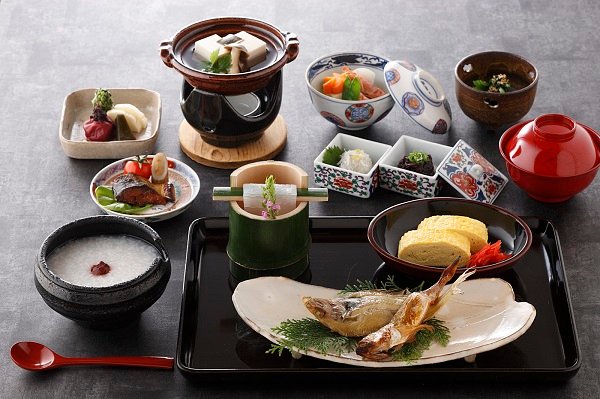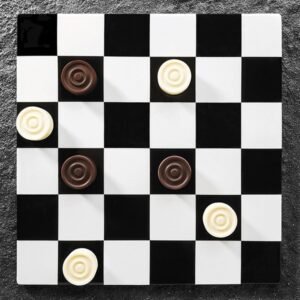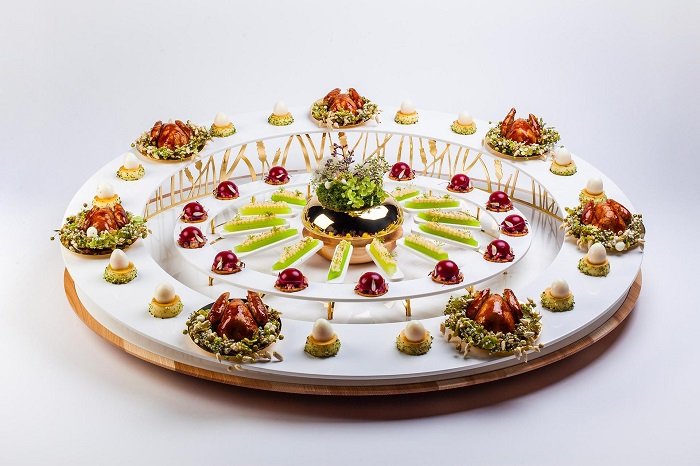Layout has become increasingly important: if a dish is beautiful to look at as well as good to the palate it will leave an even more pleasant memory in our memory.
How many times have we heard the phrase “You manalready first with the eyes“? Just think that it is from Marcus Gavvius Apicius, a Roman cook, gastronome and writer who lived in the first century B.C., this expression that has come down to the present day. Scientists and neurologists today also confirm the accuracy of this aphorism in the field of neuroscience by stating that eating, as well as breathing, is necessary for survival, and in humans this function relies primarily on vision by activating a whole series of reactions related to the satisfaction of a primary need but that it is also closely related to feelings of pleasure and reward. From here the deductive step is short: if a dish is beautiful to look at as well as good to the palate it will leave an even more pleasant memory in our memory.
The art of the table abroad

In world places and cultures where food is no longer tied to subsistence, the art of the table has taken on a different value, making way for the pursuit of all-round pleasure.
As early as the 16th century, in Japan, if we think of traditional Kaiseki cuisine, we are amazed at the precision with which ingredients are assembled on the plate to create little masterpieces for the eyes before they are for the palate.
In France, the creations of Marie-Antoine Carême, in the early 1800s, with her cakes adorned like architectural works. In more recent times, the real “French revolution” of 19th century chefs as Auguste Escoffier, a proponent of plate elegance (suffice it to say that he was director of the kitchens at the Hotel Savoy in London and the Ritz at Place Vendôme in Paris) and Paul Bocuse which has made haute cuisine history by also naming the international Bocuse d’Or award, during which each year chefs from all over the world compete against each other with recipes that amaze first and foremost for their aesthetic beauty.

To amaze has therefore become almost a buzzword. The mind races to Ferran Adrià, a Spanish chef originally from the Barcelona suburb Hospitalet de Llobregat, who has revolutionized contemporary cooking with what has been called “molecular cuisine” made of spherifications, liquid nitrogen and siphons: dishes that are creations designed to amaze guests and give multi-sensoriality to the dish.
Nowadays it seems almost taken for granted to give importance to plating so much so that for some chefs it has become a true art form involving, in addition to skills in the kitchen, skills of creativity, aesthetic culture and a good dose of precision.
Gastronomic visual art in Italy


In Italy it is Gualtiero Marchesi the icon-chef who brought to the table one of the highest expressions of visual impact linked to recipes: his “Fish Dripping” inspired by Jackson Pollock’s paintings made history in the most recent Italian gastronomy. But also Davide Oldani, in his D’O restaurant in San Pietro all’Olmo, with the dish “Battuta d’Inizio”: the tennis court? A green rectangular plate with white stripes; the ball? A yellow sphere that is a gorgonzola mousse; the grass? the sprouted teff; the spoon? But of course in the shape of a racket. So peculiar that it almost displeases to spoil the composition and one finds oneself smiling amused and well disposed. Then it is also all delicious but it becomes almost taken for granted that it is. The chocolates that accompany the coffee at the end of the meal become black-and-white checkers and you play at eating them while challenging the diner.

From Massimo Bottura, the greatest modern-day Italian cook, there is his “Oops! I dropped my lemon tart.” A dessert born through a mistake. “The first time,” the chef recounts, “as food critic Andrea Grignaffini sat in the dining room, the dessert slipped from the hands of Taka (Takahiko Kondo, his trusted collaborator) and the tart crashed onto the countertop. Hence the intuition to serve it this way, to celebrate the beauty of imperfection, a perfect gastronomic visual art.” That little explosion is then reproduced in the dish to be brought to the room, and even the dish itself is chosen specifically for that dessert. Each element recreates the “damage” of a delicious lemon-flavored tart that is ruinously smashed to smithereens.
Fantasy, play, color, art, technique, elegance, design and taste chase each other to make the dining experience as engaging and enjoyable as possible not only for the taste buds but also and perhaps especially for the eye: like a tangible photograph of flavor.




